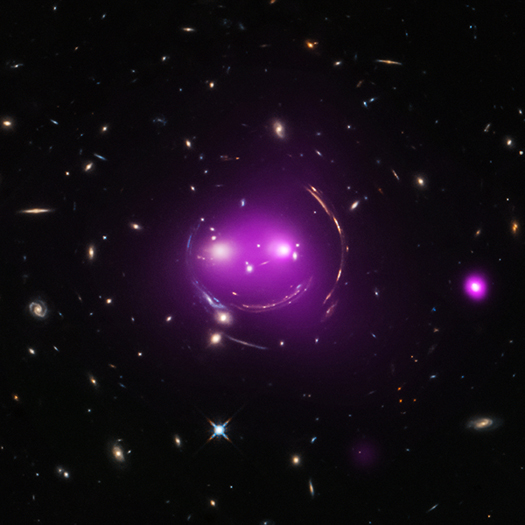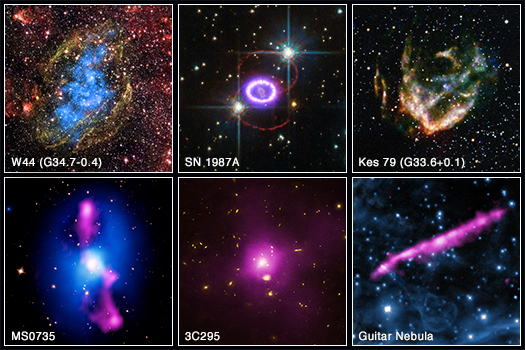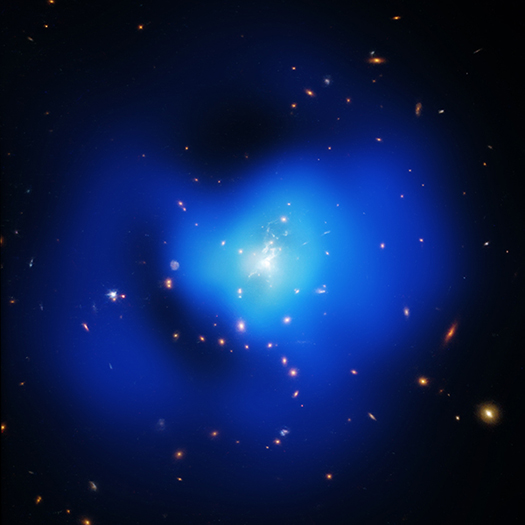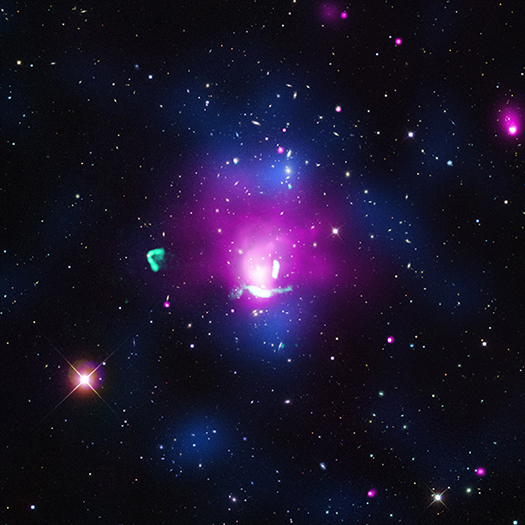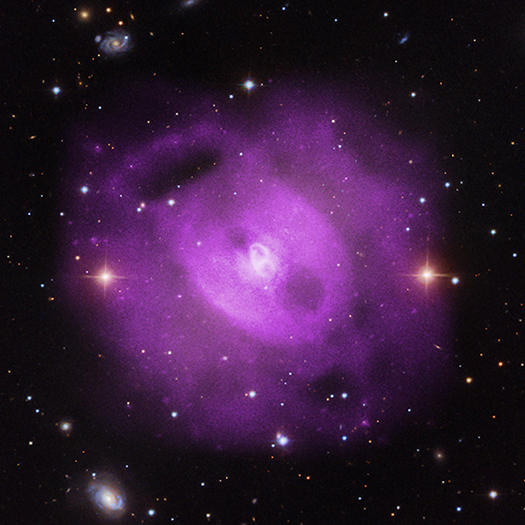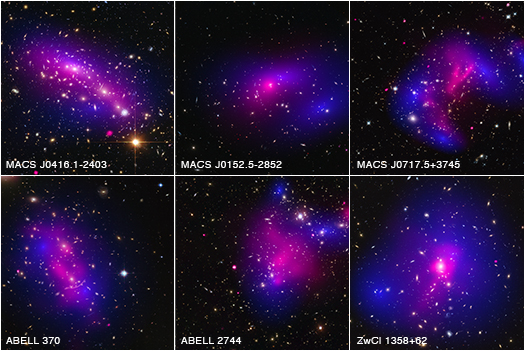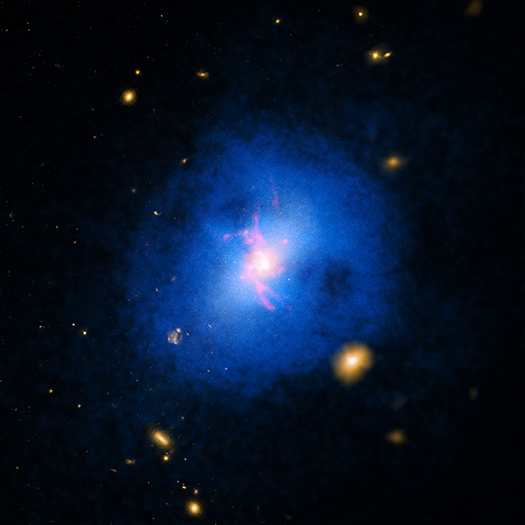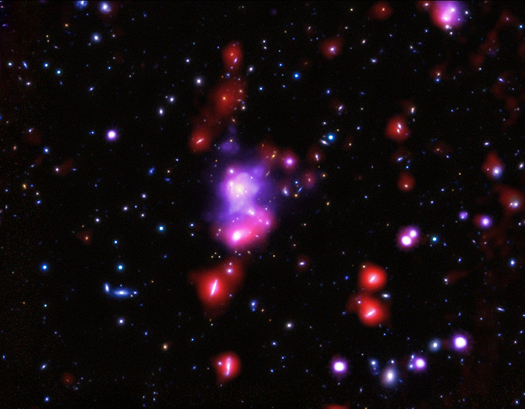Chandra Finds Remarkable Galactic Ribbon Unfurled
Submitted by chandra on Mon, 2015-12-21 12:26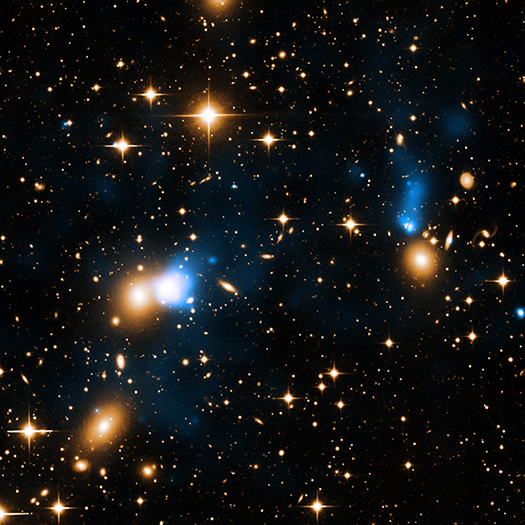
An extraordinary ribbon of hot gas trailing behind a galaxy like a tail has been discovered using data from NASA's Chandra X-ray Observatory, as described in our latest press release. This ribbon, or X-ray tail, is likely due to gas stripped from the galaxy as it moves through a vast cloud of hot intergalactic gas. With a length of at least 250,000 light years, it is likely the largest such tail ever detected. In this new composite image, X-rays from Chandra (blue) have been combined with data in visible light from the Isaac Newton Group of Telescopes (yellow) in the Canary Islands, Spain.

